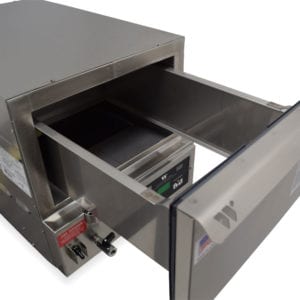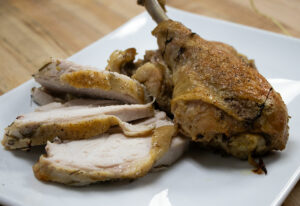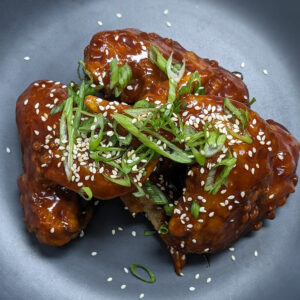What are Warming Drawers?
A warming drawer keeps food at the desired temperature for a designated period of time. Foods that will not be served immediately can be kept in the warming drawer and taken out when needed, while still fresh and full of flavor. Holding food in a hot drawer is a labor-saving way to keep tables turning during a lunch rush or peak serving times. You can be sure that a CVap Hold and Serve Drawer in your kitchen means serving quality food quickly to your guests.

Warming drawers are a tried-and-true method for holding hot food safely and ready to serve. They are a must-have in any commercial kitchen. Let’s learn more about warming drawer equipment, and decide if a Winston CVap® Hold and Serve Drawer is right for your kitchen.
CVap drawers have an operating temperature of 90°F to 180°F. Foods such as bread, rolls, and tortilla chips can be easily held in until they are ready to serve. CVap Hold and Serve Drawers have a patented dual heat system. It combines moist vapor heat and dry air heat to keep soft foods soft, and crisp foods crisp. Even delicate foods such as meat or eggs can be held at safe temperature (140°F or greater) to assure that guests dine safely, without sacrificing quality.



How are Warming Drawers Used?
- Prep and line cooks use warming drawers to reduce labor and cook times.
- Front-of-the-house staff use warming drawers for quick access to appetizers and sides, such as tortilla chips and bread.
- Caterers use warming drawers to hold cooked food for transport.
- Holding anything you want to keep moist or crisp.
- Warming drawers can hold soups or beverages.

Do I need a Warming Drawer?
If you are considering investing in a warming drawer, ask yourself a few questions . What on your menu could benefit from having a warming drawer? Where will you place your warming drawer for maximum efficiency? How much will you save on labor by adding a warming drawer?
If you have any questions about CVap Hold and Serve Drawers, please contact us. We could talk all day about the benefits of a warming drawer for your kitchen.





